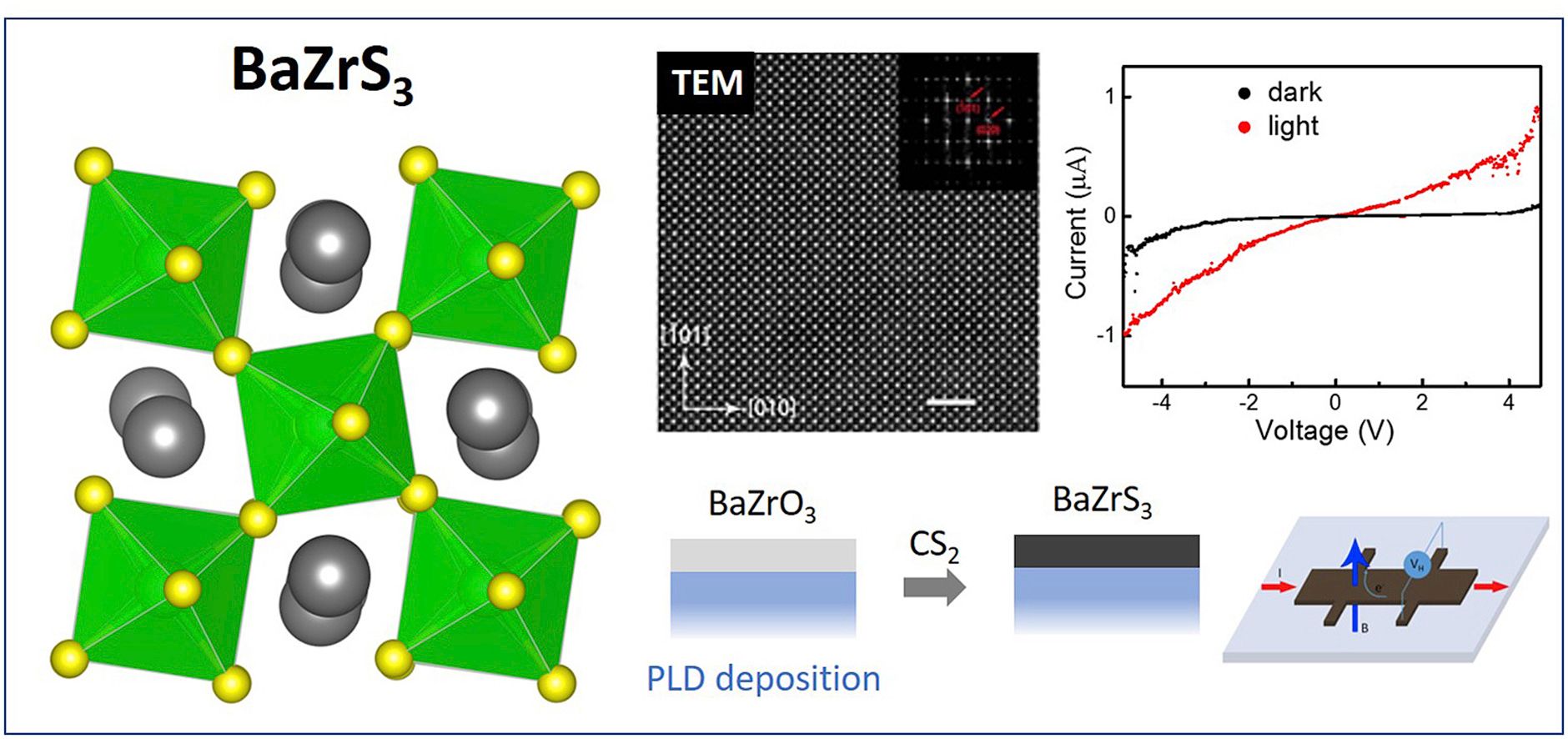In a discovery that could have major repercussions for the production of LEDs, solar panels, optical sensors, and numerous other electronic devices, scientists from the University at Buffalo have created a thin film with exceptional electronic and optical properties.
As the nanotechnology journal Nanowerk, explains, “The films combine exceptionally strong light absorption with good charge transport - two qualities that make them ideal for applications such as photovoltaics and light-emitting diodes (LEDs).”

While a thin film made from barium zirconium sulfide (BaZrS3) had already been theoretically predicted, its actual production had remained allusive. Now that the physical breakthrough has been made, it is thought that the film could herald a new wave of advances in electronics.
Early experiments have already shown that the BaZrS3 films are much more efficient than traditional silicon-based materials at converting sunlight into electricity, even at similar thicknesses.
“For many decades,” says Hao Zeng, the study’s lead and a professor of physics at the University at Buffalo College of Arts and Sciences, “there have been only a handful of semiconductor materials that have been used, with silicon being the dominant material.”
Instead, the new raw material could have a significant impact on solar power production, lowering the costs of manufacturing panels as the new film performs well even with imperfections.
“Manufacturing nearly flawless materials is typically more expensive,” says Zeng.
The material for the film is described in the University at Buffalo press release as belonging to, “… a category of materials known as chalcogenide perovskites, which are nontoxic, earth-abundant compounds. In recent years, theorists have calculated that various chalcogenide perovskites should exhibit useful electronic and optical properties, and these predictions have captured the interest and imagination of experimentalists like Zeng.”

Yet, BaZrS3 is not actually a new discovery, as the compound was already known and investigated as long ago as the 1950s.
“It has existed for more than half a century,” says Zeng. “Among earlier research, a company in Niagara Falls produced it in powder form.”
However, as powders are not a practical medium for use in electronics, Zeng and his team set about converting the powder into a film.
They achieved this by employing a laser to heat up and vaporize the barium zirconium oxide. This vapor was then deposited on a sapphire surface to form a film, which was then converted into the desired final product via a chemical reaction called sulfurization.
The team have now published their results in the journal Nano Energy, where they announce the discovery of, “… an emerging class of unconventional semiconductor … [which could] potentially unleash the family of chalcogenide perovskites for optoelectronics such as photodetectors, photovoltaics, and light emitting diodes.”

“Semiconductor research has traditionally been highly focused on conventional materials. This is an opportunity to explore something new,” notes Haolei Hui, one of the study’s first authors. “Chalcogenide perovskites share some similarities to the widely researched halide perovskites, but do not suffer from the toxicity and instability of the latter materials.”
“Now that we have a thin film made from BaZrS3,” says PhD students Xiucheng Wei, another of the study’s first authors, “we can study its fundamental properties and how it might be used in solar panels, LEDs, optical sensors and other applications.”
But more importantly than finding short term uses for the new film, as a raw material barium zirconium sulfide may herald a new chapter of discovery for electronics.
As Zeng states, “Our thin films open the door to a new direction in semiconductor research. There's a chance to explore the potential of a whole new class of materials.”
Photo credit: UniversityatBuffalo, ScienceAlert, & Nano Energy, Pexels